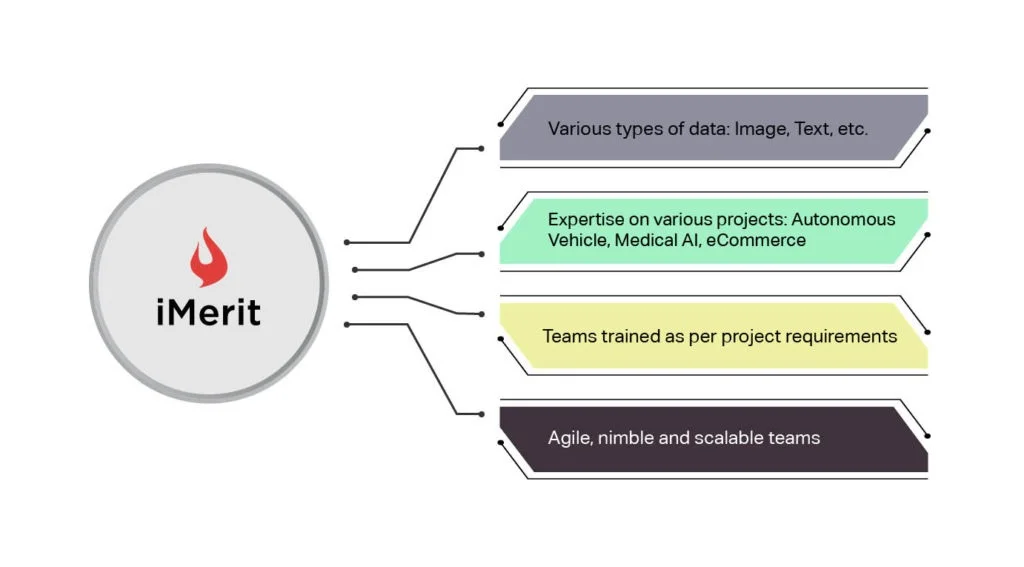Data labeling is the lifeblood of machine learning. The unsung hero drives AI performance, and with a well-oiled data labeling strategy, even the most advanced machine learning models will succeed. Whether you're working with image recognition, NLP, or autonomous vehicles, the accuracy of your model relies on properly labeled data.
Here are the top five best practices for data labeling to gear up your machine-learning models in the right direction.

When it comes to data labeling, ambiguity is an enemy. Vague instructions can leave a bad impression, leaving even the best annotators scratching their heads, leading to inconsistent or incorrect labeling. To avoid this, you should create comprehensive and step-by-step guidelines for your team or outsourced service providers.
Creating these guidelines upfront might seem like a hassle, but it’s like building a house—you wouldn’t start construction without blueprints. With solid instructions, your team will label more accurately and consistently.
Pro Tip: Consider outsourcing data labeling to a trusted partner with established workflows and guidelines. It will save you valuable time and ensure error-free results from the start.
Automation is the future of data labeling, but it’s not a silver bullet. While human insight is irreplaceable in certain areas, automation can expedite repetitive or simple tasks. Finding the right balance between human input and automated tools will streamline your process.

Think of automation like autopilot—it’s efficient and accurate for standard scenarios, but human pilots are there to make critical decisions when needed.
According to Grand View Research, the global AI-based data labeling market is expected to grow at a CAGR of 22%, primarily driven by automation.
Like a well-baked cake requires tasting along the way, data labeling needs constant quality checks. It’s tempting to rush through a dataset under pressure, but sloppy work can sabotage your machine-learning model in the long run.
Cutting corners on quality control is like building a house with a shaky foundation—everything could collapse. Solid QC mechanisms at every stage prevent future rework and costly errors.
Machine learning projects start small, but as models evolve, so do the datasets. You need to ensure your data labeling process is flexible enough to scale with your project. A disjointed or bottlenecked workflow can throw your timeline off track.
Building scalable workflows is similar to setting up an assembly line. Every part must work harmoniously to increase output without compromising quality.
You can’t rely on generalist annotators when dealing with complex data types. Whether it’s legal, medical, or scientific data, employing specialized annotators ensures accuracy and reduces the risk of errors. These experts bring domain-specific knowledge essential for identifying subtle patterns others might overlook.

Always outsource data labeling to specialized services for complex or niche tasks. This guarantees accurate, industry-specific results without training an in-house team.
While setting up an in-house data labeling team is possible, outsourcing tasks is more efficient. Whether you’re handling image, video, or text data, outsourcing gives you access to professional services that can manage large datasets without sacrificing quality.
At Lexiconn, we offer data labeling services that streamline the entire process for businesses. Whether you’re working on a small pilot project or scaling up to a larger dataset, our team is equipped to handle the job with precision and speed. We also ensure accurate data tagging for AI, delivering results that improve your ML model performance.
The importance of accurate data labeling in machine learning cannot be overstated. By following these five best practices—establishing clear guidelines, automating where possible, maintaining stringent quality control, scaling workflows, and using specialized annotators—you’ll set your AI projects up for long-term success.
At Lexiconn, we specialize in providing professional data labeling services that meet your project’s specific needs. Outsource data labeling to us, and you’ll benefit from error-free data tagging, scalable solutions, and industry expertise.
Ready to supercharge your machine learning project? Visit us at lexiconn.in or drop us at [email protected].
Lexiconn also offers a free 30-minute content consultation session to help you with your content strategy.



I have read and accept the Privacy Policy
Read More